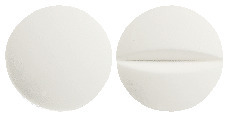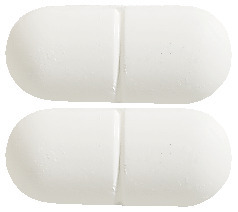WHAT IS IN THIS LEAFLET
This leaflet answers some common questions about ACICLOVIR SANDOZ tablets. It does not contain all of the available information. It does not take the place of talking to your doctor or pharmacist.
All medicines have risks and benefits. Your doctor has weighed the risks of you taking ACICLOVIR SANDOZ against the benefits it is expected to have for you.
If you have any concerns about taking this medicine, ask your doctor or pharmacist.
Keep this leaflet with the medicine. You may want to read it again.
WHAT ACICLOVIR SANDOZ IS USED FOR
ACICLOVIR SANDOZ is used for the treatment of genital herpes.
ACICLOVIR SANDOZ is used for the treatment of shingles (herpes zoster). Shingles is caused by the same virus that causes chicken pox.
Your doctor may, however, have prescribed ACICLOVIR SANDOZ for another reason.
If you have any questions about why you are taking ACICLOVIR SANDOZ ask your doctor or pharmacist.
ACICLOVIR SANDOZ contains the active ingredient aciclovir. Aciclovir belongs to a group of medicines called "anti-virals".
ACICLOVIR SANDOZ works by stopping the multiplication of the virus that causes herpes. It can reduce the length and severity of an outbreak of herpes or alternatively may be used to reduce the number of outbreaks in someone who has frequent recurrences. It does not eliminate the herpes virus from the body.
BEFORE YOU TAKE ACICLOVIR SANDOZ
When you must not take it
Do not take this medicine if you have an allergy to:
- aciclovir, the active ingredient, or to any of the other ingredients listed at the end of this leaflet under Product Description
- any other similar medicines such as valaciclovir.
Do not take this medicine if you are pregnant, or become pregnant while using ACICLOVIR SANDOZ. It may affect your developing baby if you take it during pregnancy.
Do not breastfeed if you are taking this medicine. The active ingredient in ACICLOVIR SANDOZ passes into breast milk and there is a possibility that your baby may be affected.
Do not take this medicine after the expiry date printed on the pack or if the packaging is torn or shows signs of tampering. If it has expired or is damaged, return it to your pharmacist for disposal.
If you are not sure whether you should start taking this medicine, talk to your doctor.
Before you start to take it
Tell your doctor if you have allergies to any other medicines, foods, preservatives or dyes.
Tell your doctor if you have or have had any medical conditions, especially the following:
- a kidney or liver condition
- a blood condition, such as anaemia (a decreased red blood cell count) or neutropenia (lack of white blood cells)
- a disease affecting the nervous system
- any condition affecting your brain.
Tell your doctor if you plan on becoming pregnant or will be breastfeeding while you are using ACICLOVIR SANDOZ. Your doctor can discuss with you the risks and benefits involved.
If you have not told your doctor about any of the above, tell him/her before you start taking ACICLOVIR SANDOZ.
Taking other medicines
Tell your doctor if you are taking any other medicine, including any that you get without a prescription from your pharmacy, supermarket or health food shop.
In particular, tell your doctor if you take the following:
- medicines used to prevent gout or gouty arthritis such as probenecid
- medicines used to treat gastric ulcers or reflux such as cimetidine
- fluid or water tablets (diuretics)
- interferon, used to treat a range of conditions such as liver disease and some types of cancer
- medicines used to prevent rejection of transplanted organs such as mycophenolate mofetil
- intrathecal injections (which are injections into the space around the spinal cord) of methotrexate.
These medicines may be affected by ACICLOVIR SANDOZ, or may affect how well it works. You may need to use different amounts of your medicine, or you may need to take different medicines. Your doctor will advise you.
HOW TO TAKE ACICLOVIR SANDOZ
Follow all directions given to you by your doctor or pharmacist carefully. They may differ from the information contained in this leaflet.
If you do not understand the instructions, ask your doctor or pharmacist for help.
How much to take
The following is a guide to the usual dose:
Treatment of Genital Herpes
One ACICLOVIR SANDOZ 200mg tablet five times a day, approximately every 4 hours throughout the day while awake. Either take your tablets at 7am, 11am, 3pm, 7pm, and 11pm or choose a timeframe that suits your daily schedule. Treatment should be for a period of 5 or 10 days.
To prevent or reduce the frequency of outbreaks in the long term, the usual dose is one ACICLOVIR SANDOZ 200mg tablet three times daily for up to six months. Depending on the response your doctor may vary this dose.
Some people who have repeated outbreaks of herpes take one ACICLOVIR SANDOZ 200mg tablet every four hours, a total of five tablets a day, for five days each time they have an outbreak. If this applies to you, it is important to start taking ACICLOVIR SANDOZ at the first sign of an outbreak.
Treatment of Herpes Zoster (Shingles)
One ACICLOVIR SANDOZ 800mg tablet five times a day, approximately every 4 hours throughout the day while awake. Either take your tablets at 7am, 11am, 3pm, 7pm, and 11pm or choose a timeframe that suits your daily schedule. Treatment should be for a period of 7 days. For herpes zoster ophthalmicus (herpes infection of the eyes) it is recommended that the duration of treatment is 7-10 days.
Do not stop taking ACICLOVIR SANDOZ tablets because you feel better.
Do NOT take any more than prescribed by your doctor.
In all cases the duration of treatment will be determined by your doctor.
If you need to break ACICLOVIR SANDOZ hold tablet with both hands and snap along break line.
If you forget to take it
If you have just missed your scheduled dose take it as soon as you remember, and continue to take it as you would normally.
If it is almost time for your next dose, skip the dose you missed and take your next dose when you are meant to.
Do not take a double dose to make up for the dose you missed.
If you are not sure what to do, ask your doctor or pharmacist.
If you have trouble remembering when to take your medicine, ask your pharmacist for some hints.
If you take too much (overdose)
Immediately telephone your doctor or the Poisons Information Centre (telephone Australia 13 11 26 or New Zealand 0800 POISON or 0800 764766) for advice, or go to Accident and Emergency at your nearest hospital, if you think you or anyone else has taken too much ACICLOVIR SANDOZ. You may need urgent medical attention.
Do this even if there are no signs of discomfort or poisoning.
WHILE YOU ARE TAKING ACICLOVIR SANDOZ
Things you must do
Always follow your doctor's instructions carefully.
Tell your doctor if you become pregnant while taking ACICLOVIR SANDOZ.
If you are about to start taking a new medicine, tell your doctor and pharmacist that you are taking ACICLOVIR SANDOZ.
Drink plenty of fluids.
See your doctor if you feel that your condition is not improving or getting worse.
Things you must not do
Do not stop taking ACICLOVIR SANDOZ without your doctor's permission. Do not stop taking ACICLOVIR SANDOZ tablets because you feel better.
Do not use ACICLOVIR SANDOZ to treat any other complaint unless your doctor says so.
Do not give this medication to anyone else, even if their symptoms seem similar to yours.
Things to be careful of
Be careful driving or operating machinery until you know how ACICLOVIR SANDOZ affects you.
SIDE EFFECTS
All medicines can have unwanted effects. Sometimes they are serious, most of the time they are not.
Do not be alarmed by this list of possible side effects. You may not experience any of them.
Tell your doctor if you notice any of the following and they worry you:
- nausea
- vomiting
- diarrhoea
- stomach pain
- headache
- dizziness
- confusion
- hallucinations
- seizures
- fatigue
- itching
- skin reaction after sunlight exposure
- fever.
Less common side effects include:
- chest pain, shortness of breath, aching
- constipation
- taste disturbances
- liver disorders
- vertigo, difficulty sleeping
- tiredness, fast heart rate
- weight loss, fluid retention, leg and joint pain
- sore throat, skin rashes
- cramps, menstrual problems, hair loss
- irritability, depression
- swollen glands, vein disorders
- eye disorders
- shakiness.
If any of the following happen, stop taking ACICLOVIR SANDOZ, and tell your doctor immediately, or go to accident and emergency at your nearest hospital:
- swelling of the face, lips, mouth or throat, which may cause difficulty in swallowing or breathing.
Other side effects not listed above may also occur in some people. Tell your doctor if you notice any other effects.
AFTER TAKING ACICLOVIR SANDOZ
Storage
Keep your medicine in the original container.
If you take it out of its original container it may not keep well.
Keep your medicine in a cool dry place where the temperature stays below 25°C.
Do not store ACICLOVIR SANDOZ or any other medicine in the bathroom or near a sink. Do not leave it on a window sill or in the car.
Heat and dampness can destroy some medicines.
Keep if where children cannot reach it. A locked cupboard at least one-and-a-half metres above the ground is a good place to store medicines.
Disposal
If your doctor tells you to stop taking this medicine or the expiry date has passed, ask your pharmacist what to do with any medicine that is left over.
PRODUCT DESCRIPTION
What it looks like
ACICLOVIR SANDOZ 200mg tablets are white, round tablets with a break score on one side. They are available in blister packs of 25 or 90 tablets.
ACICLOVIR SANDOZ 800mg tablets are white, biconvex oblong tablets with break scores on both sides. They are available in blister packs of 35 tablets.
Ingredients
Active Ingredients:
Each tablet of ACICLOVIR SANDOZ 200mg contains 200mg aciclovir.
Each tablet of ACICLOVIR SANDOZ 800mg contains 800mg aciclovir.
Inactive Ingredients:
- lactose
- microcrystalline cellulose
- sodium starch glycollate (type A)
- copovidone
- magnesium stearate
Supplier
Sandoz Pty Ltd
ABN 60 075 449 553
54 Waterloo Road
Macquarie Park NSW 2113
Australia
Tel: 1800 726 369
Novartis New Zealand Ltd
PO Box 99102, Newmarket
Auckland 1149
New Zealand
Tel: 0800 354 335
This leaflet was revised in January 2019.
Australian Register Numbers
ACICLOVIR SANDOZ 200mg tablets: AUST R 99420 (blisters)
ACICLOVIR SANDOZ 800mg tablets: AUST R 99421 (blisters)
Published by MIMS March 2019




